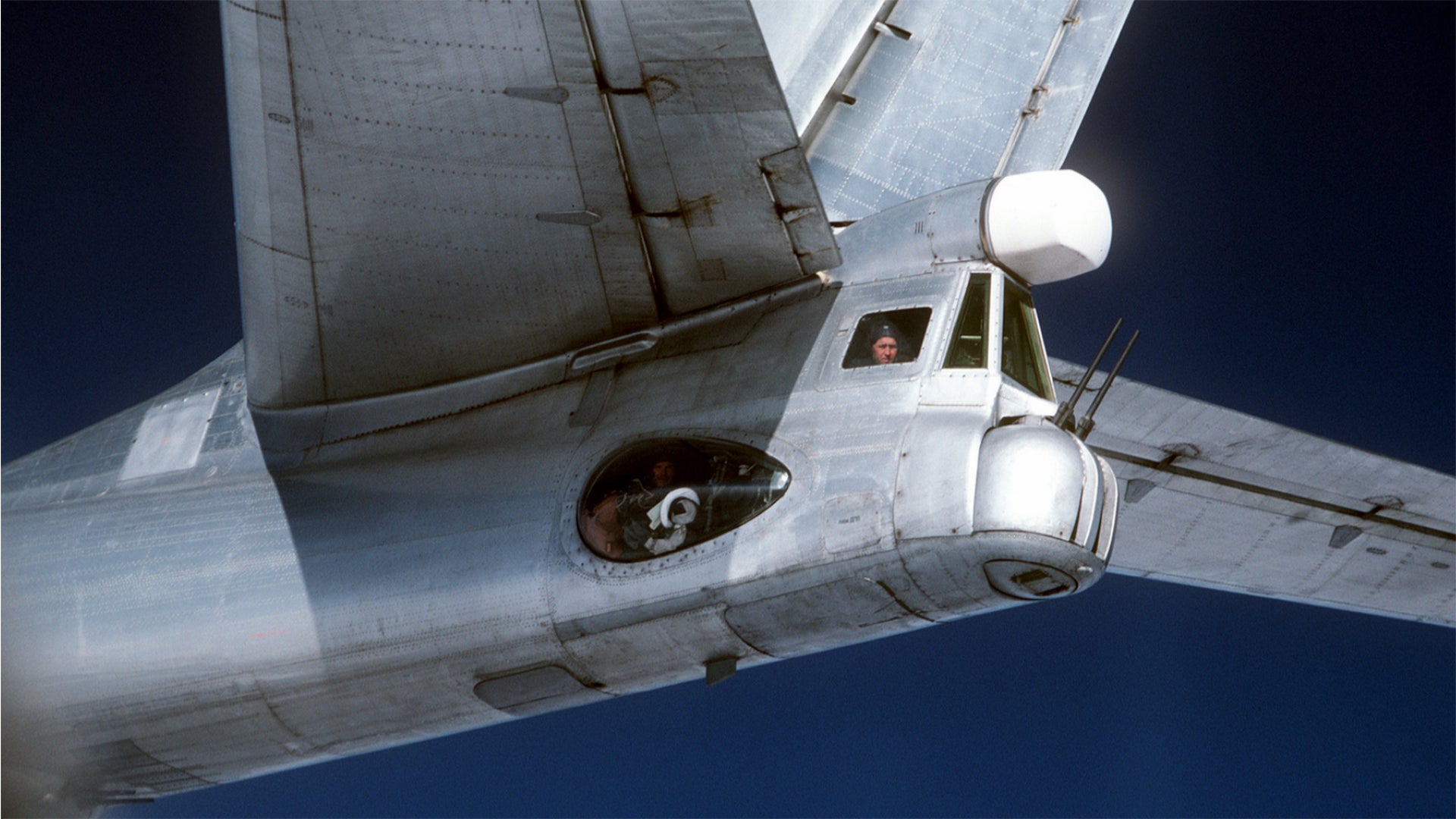The Russian Ministry of Defense’s latest video presenting its now-regular long-range bomber drills includes a relatively rare in-action view of the tail guns of the Tupolev Tu-95MS Bear-H spitting out 23mm rounds. The Tu-95MS — which, despite its antiquated looks, is actually a good deal younger than the U.S. Air Force’s B-52H — is one of very few frontline aircraft still equipped with a tail gunner’s position, something you can read about in detail here.
The video, which appeared recently on the Russian Ministry of Defense’s YouTube channel, shows Tu-160 Blackjack and Tu-95MS strategic missile carriers, during the course of drills in which they practiced launched cruise missiles against ground targets on a range in the Arctic, and which were scheduled to end today. So far, however, there has been no evidence of any live cruise missile launches, with the only visible weapons employment relating to the Bear’s tail guns.
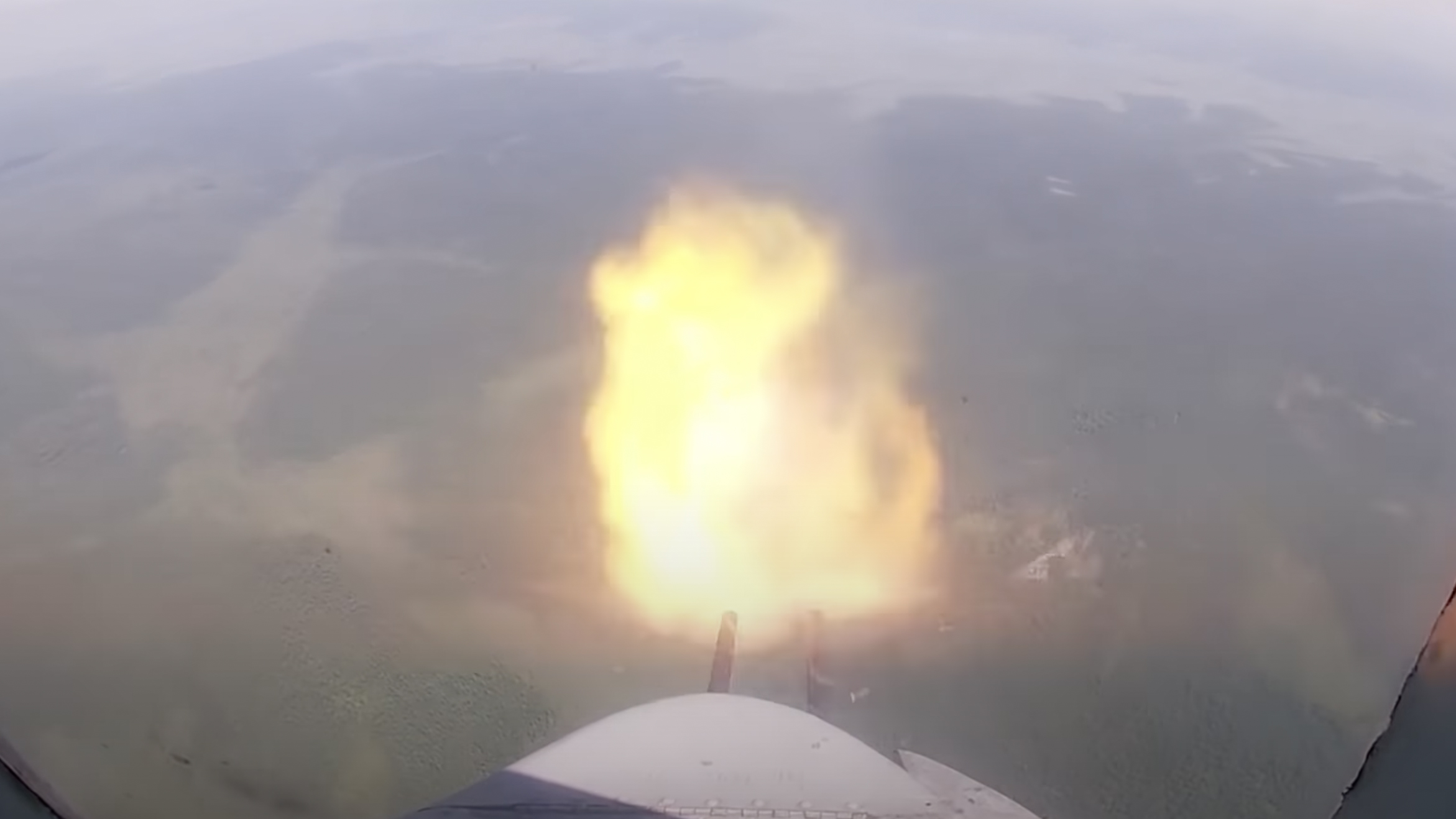
According to the defense ministry, at least some of the bombers seen in this video took off from an airfield in the Saratov region, in southwest Russia, and flew more than 2,400 miles, aided by aerial refueling.

“In addition, in the Irkutsk region, the crews of the Tu-95MS of the Amur Long-Range Aviation formation practiced firing from the tail aircraft cannons,” the ministry explained. The accompanying video shows several bursts fired from a Bear’s tail turret, but it’s not clear what, if any targets, are being engaged.
The official statement suggests that this particular Tu-95MS was from Ukrainka Air Base, in the Amur region in the Russian Far East. This is a major strategic aviation hub with almost 40 individual revetments for three squadrons of Bear-Hs.
While the Tu-95MS is undergoing a process of modernization and is adding advanced weapons including low-observable subsonic cruise missiles, with both nuclear and conventional warheads, the tail turret is, admittedly, a throwback to the aircraft’s original design origins in the 1950s.
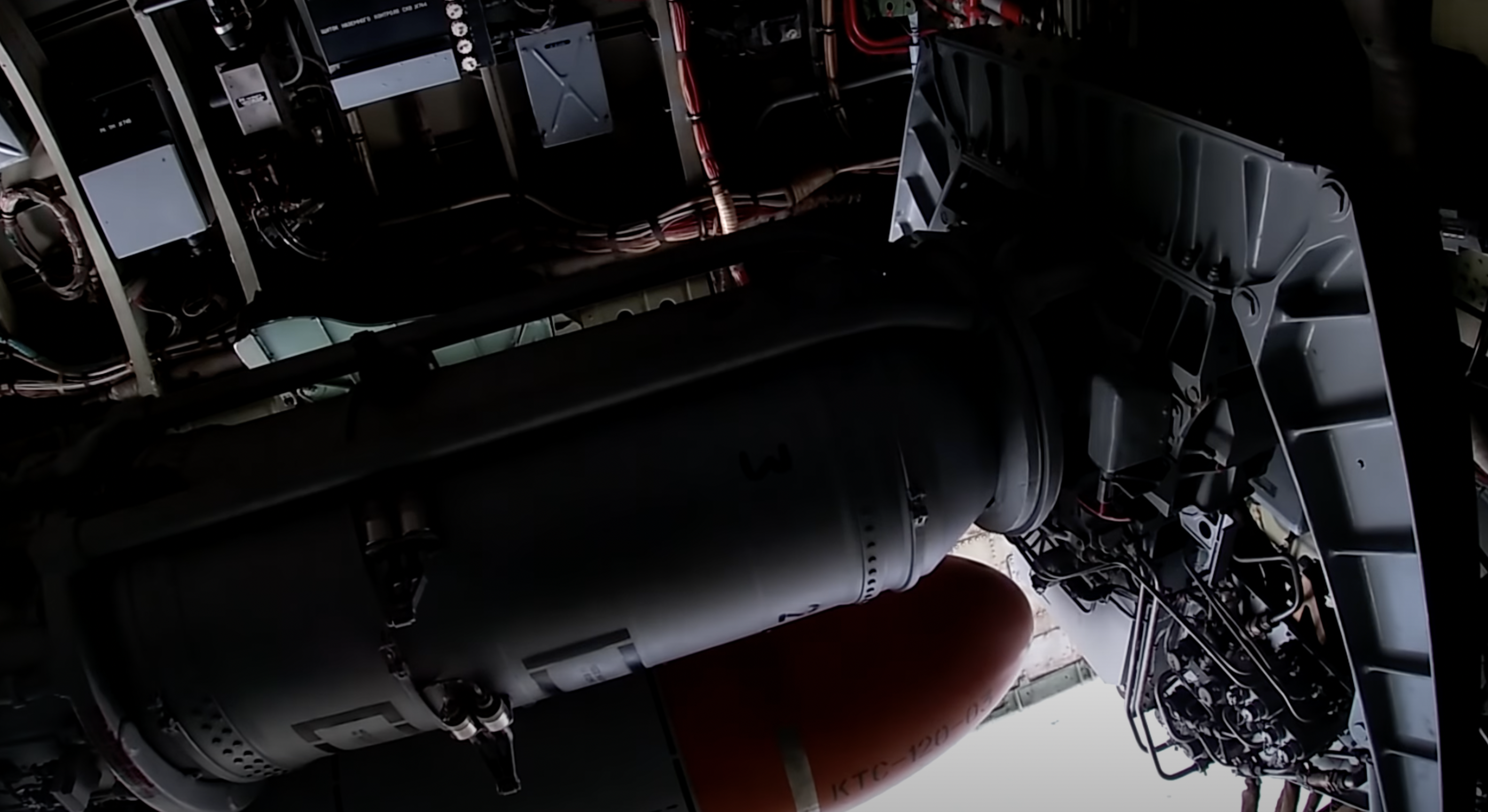
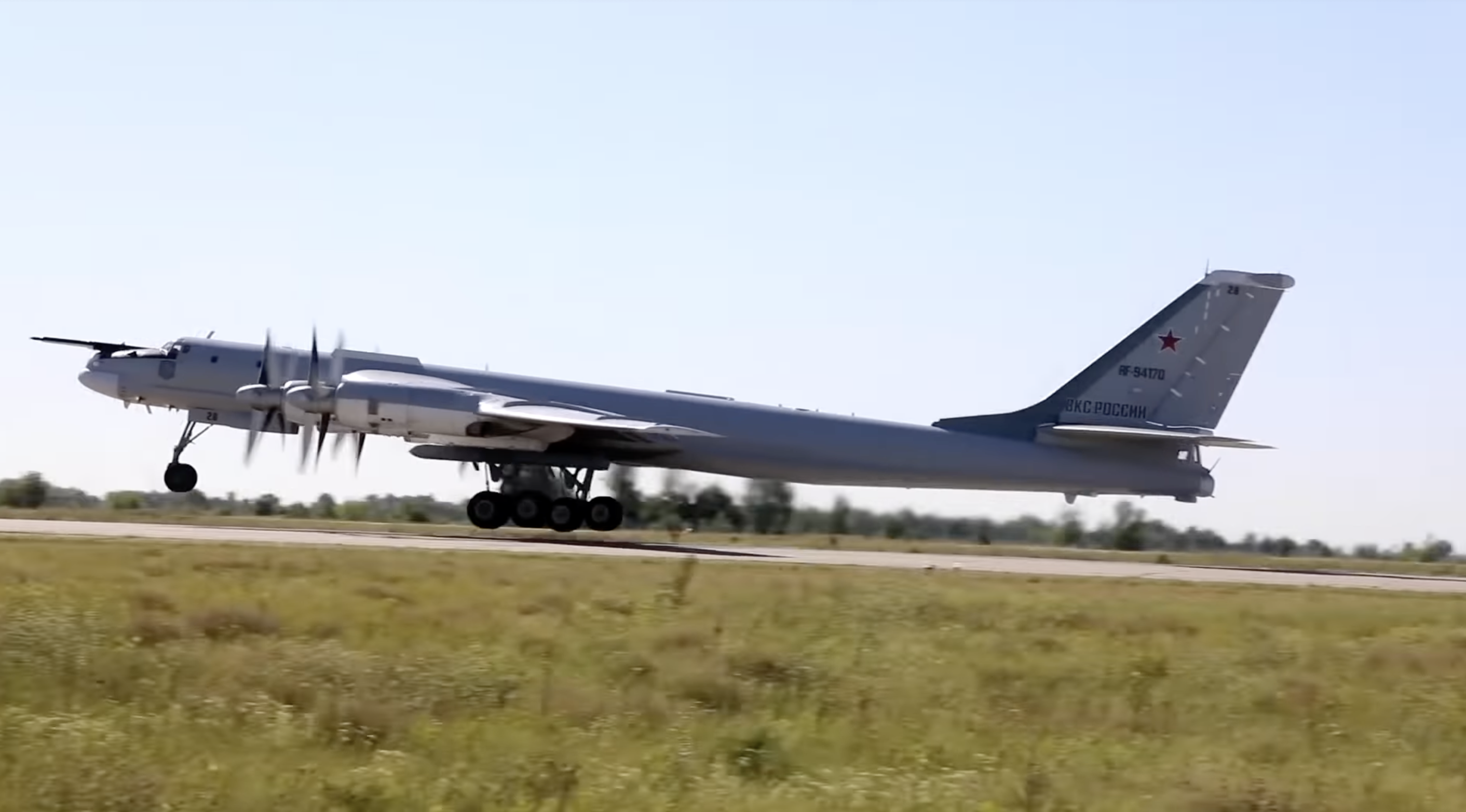
The Tu-95MS is operated by a crew of seven, all but one being accommodated in a pressurized compartment in the forward fuselage. The tail gunner, however, is provided with a separate rear compartment from which they operate the 23mm cannons that provide a degree of defense from the rear aspect. The 9A-503M tail turret has powered controls and can be aimed using a Krypton radar sight, known to NATO by the reporting name Box Tail.
The Tu-95MS seen in the video appears to be armed with the older AM-23 single-barrel guns, which were fitted in early Bear-H aircraft. Later aircraft were equipped with two twin-barrel 23mm GSh-23 cannons instead. The same GSh-23 defensive tail turrets are found on the Tu-22M3 Backfire-C bomber and the Il-76 Candid transport aircraft, too.
Russian Aerospace Forces Il-76 transports practice dropping bombs and strafing with their tail turrets:

The ancestor of today’s Tu-95MS, the original Tu-95 first flew in November 1952, at a time when defensive armament for heavy bombers was still commonplace, in the Soviet Union as well as in the United States.
By the time the Tu-95MS began to be manufactured in 1981, the aircraft has assumed a new role as a launch platform for long-range cruise missiles, and advances in surface-to-air and air-to-air missiles meant that gun armament was of far more limited value.

Nevertheless, the Tu-95MS retained the tail guns, as did its U.S. counterpart at that time, the B-52H, which had a single 20mm M61 Vulcan cannon plus a radar. The American bomber differed, however, in relocating the gunner to the main cabin, while the gunner in the Tu-95MS remains in their lonely outpost in the tail.
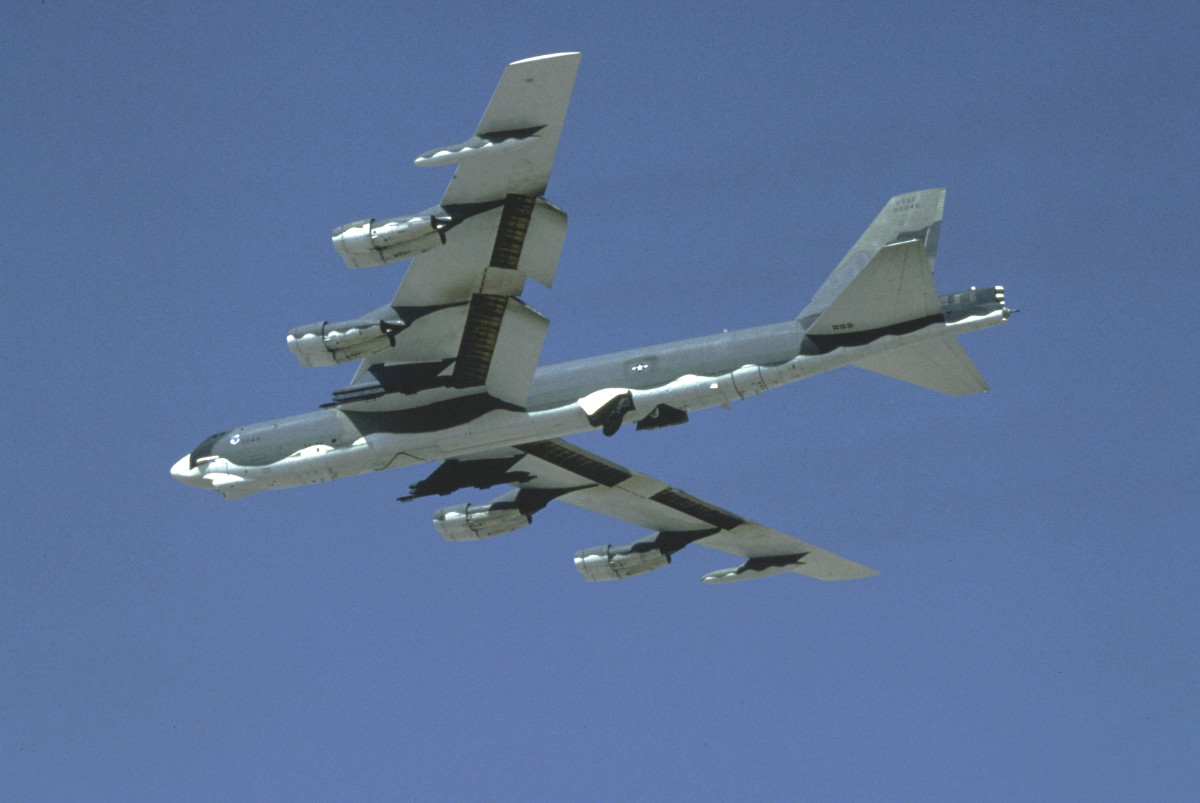
During the Cold War, the tail gunner was often the crew member who saw the most of the various aircraft sent to intercept the Bear flights, and there was no shortage of interaction between tail gunner and fighter pilots, including mutual photography, especially vital to identify any potential changes in aircraft equipment or configuration. Sometimes this even developed into a good-humored rapport, including crews showing each other copies of Playboy magazine, or raising bottles of vodka.

The B-52 lost its tail gun after the end of the Cold War and the demise of Strategic Air Command. Meanwhile, the Tu-95MS today relies primarily on electronic countermeasures and chaff to deceive enemy radars, as well as infrared flares to spoof heat-seeking missiles.
The Meteor-NM self-defense system on the Tu-95MS includes radar warning receivers, infrared missile launch-and-approach sensors, as well as active radar jammers. The countermeasures dispensers are located in the huge undercarriage fairings on the wings.

It’s probable, too, that the Bear’s guns are also used to fire countermeasures, in the form of radar and thermal decoy rounds. These are known to be part of the ammunition for the remotely controlled tail guns in the Tu-22M3, for example.
Ultimately, the value of tail guns firing conventional ammunition is highly questionable for any of the kinds of combat missions the Tu-95MS is likely to undertake. On the other hand, the fact that crews are still training to use all functions of the Bear-H points to the increasingly high levels of readiness that Russia now demands of its strategic bomber force.
Contact the author: thomas@thedrive.com
